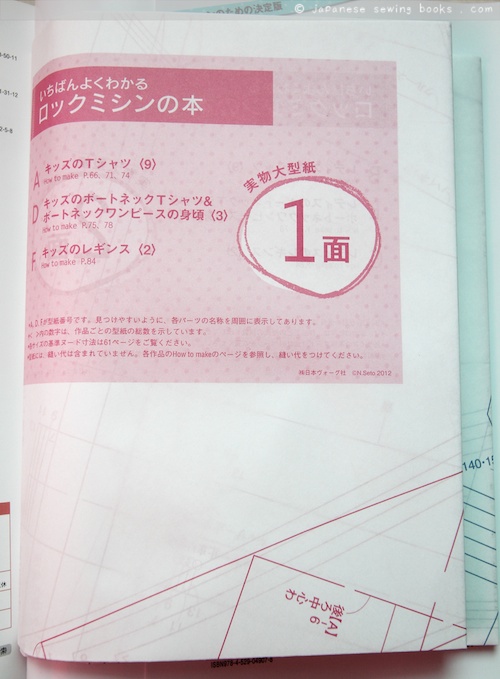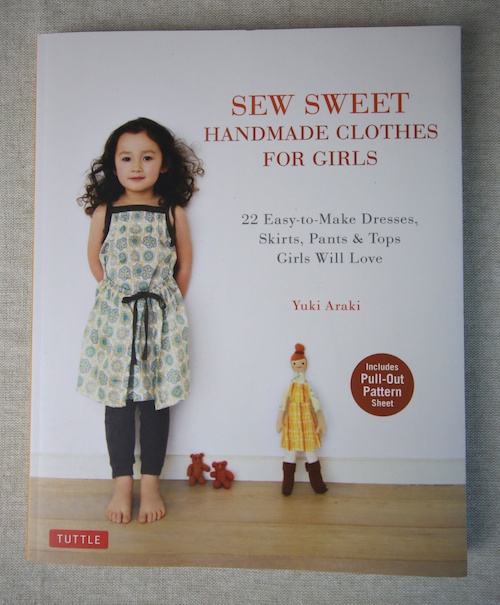I once mentioned in an earlier post that I wanted to get hold of this book but it was out of stock. I finally managed to get my hands on it, and it’s good! I bought this book because I was venturing into the world of overlocking and even after playing around with my overlocker, I wasn’t very sure how to adjust the tensions or if I was doing it right. Learning to thread was manageable after many trials and errors, but there was still a learning curve in figuring out how to adjust the tensions, and especially how to sew on knits.
The book is both a guide on overlockers/sergers as well as a pattern book. There are a total of 21 projects included. They are all basic garments and mostly knit fabrics, as the intention is to teach you how to use the overlocker to make everyday clothes like t-shirts and pants.
Page 1 of project list.
Page 2. There is also a section on rolled hemming for thin fabrics and using it for decorative edges.
The first part of the book goes through, in great detail, about overlockers and their stitches. Basics like threading and tension adjustments are included. Troubleshooting for improper tension or feed settings are also covered. There are a few specific brands that are covered in great detail, so if you have a similar machine it will be even more useful. But for threading, every machine is slightly different so it’s always best to follow your manual.
Some photos of a babylock
Other than machine specific information, there are also alot of tips and troubleshooting with examples of improper stitching. So that you can achieve the most perfect results!
There are also tips on difficult to sew areas such as corners and curves.
Moving on to the projects, the section starts with an introduction on the types of knit fabrics.
How to transfer patterns and cut out knit fabrics.
The projects are basic daily wear like t-shirts and pants, so they can be used for ladies, mens as well as kids. The sizes included are listed above.
Some samples of the projects – Boat neck t-shirt.
Crew neck Tees for Mens and Kids
Using the rolled hems on sheer lightweight fabrics.
As you can see by now, this book is full of pictures. Even for the projects, all the steps involved are demonstrated in step by step photos.
It even shows you the detailed finishing at awkward corners. Every bit counts to making it perfect!
2 sheets of actual size pattern paper included.
This book is a lot more detailed with the workings of an overlocker than the previous book I reviewed. But the projects are simpler whereas the other book has more variety in terms of dresses and use of the stitches. I will strongly recommend this book if you are new to overlockers/sergers and need to see for yourself how basic garments like T-shirts and pants are made, or if you need help in troubleshooting your stitches. It may look simple, but it does take some practice and skill to get a quality finish.
Title : いちばんよくわかる ロックミシンの本
ISBN No : 978-4-529-05040-1
Publisher : Nihon-Vogue
Designer (for projects) : 山岸桂緒莉 Mammy Jewel Box






















4 Comments
I love reading your book reviews, although they have made my already long japanese sewing books wish list even longer… =) This looks like one that might be helpful to me, especially in the finishing. But, I still want the Sewing Lessons Book first.
I have a Babylock serger that I’ve own for two years, I’ve been sewing for 45 years and don’t know how I got by without one. I truely love it and it makes the sewing go so much faster with a clean seam. Its such an easy machine to run.
Do you think this book is useful for those who don’t speak Japanese at all?
Well, the pictures are certainly useful but there are also alot of explanatory text. I actually used it alot for pictorial reference but if you really want to know the explanations behind all the settings and adjustments, then maybe it won’t be the best book for you.